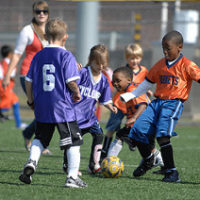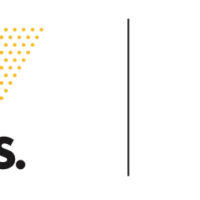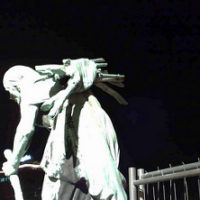After almost two generations of declining emphasis on the arts in public schools we face communities largely made up of people who have little or no experience participating in the arts. Where once large percentages of students sang, played in band, acted on stage, painted and made murals, and/or took private music lessons outside of school, today that is no longer the case. This is certainly not the only obstacle arts organizations face in … [Read more...]
The NEA (and Other Things)
The NEA, along with the NEH, the IMLS, the CPB, etc., etc., is very important for both symbolic and practical reasons. And I know that my professional niche is the nonprofit arts and culture industry. With respect to "Engaging Matters" I have seldom written about issues not directly related to the practice of community engagement, but the fight over funding cultural support mechanisms is vitally important to our industry so I know I should be … [Read more...]
Contextualize First
The tendency to imagine that community engagement demands all kinds of new work, new approaches, and new venues makes the consideration of engagement nearly impossible for some. Last week in Essential Gradualism I pointed out that undertaking no immediate steps is often the best approach. Earlier, in Keep It Simple I made the case that even when programming becomes a part of the engagement process it is best to "go simple." Engagement can often … [Read more...]
Essential Gradualism
An occasionally expressed concern about community engagement is that current stakeholders will be driven away by imagined precipitous changes to the organization and/or its offerings. There are a couple of responses to this that should be comforting. First, community engagement should begin with the community that is your core constituents. Getting their feedback on plans and involving them in the process of making your organization indispensable … [Read more...]
When Free Is Insufficient
They won't even come when it's free! That lament from an arts administrator, with eyes rolled and hands thrown up, demonstrates a profound lack of connection with the subject of the exclamation. It is usually expressed in a "safe space" in an arts organization's office or conference room. I get the frustration but let's break it down a bit. First, nothing is ever really "free." At the least there is opportunity cost: what might someone be doing … [Read more...]
Engagement Is Not . . .
There are, of course, many things that community engagement is not. High on that list is "a magical elixir to cure all of the nonprofit arts industry's ills." At best it can position organizations for greater viability by significantly increasing donor and attendee reach. That comes to pass by being seen as valuable by much larger percentages of the population than is the case at the moment. Addressing more common and smaller issues, engagement … [Read more...]
Communities as Resources
Some time ago I happened to catch a segment on the PBS News Hour featuring the Harvard educated DJ Jace Clayton (who goes by the name DJ/rupture). He works by collecting music of all kinds from all over the world and creating fusions of many styles. He seeks out interesting and unusual music in villages, street corners, and back alleys. Any music is worthy of consideration. Dancing is, of course, an ultimate goal. By itself I found this … [Read more...]
Universality/Particularity
In keeping with the spirit of my just-concluded series on privilege I wanted to direct readers to a very good blog post by fellow ArtsJournal writer Alexander Laing. His Dear White Orchestras helps put some of the issues I addressed in a context specific to an arts form, in this case symphony orchestras. His introduction of the contrast between universality and particularity is especially important for those of us in the world of legacy arts … [Read more...]
Privilege/Encumbrance: Part III
This post is the last of a three-part series that is not strictly about community engagement. However, to engage with communities with which one is not familiar it is essential to understand the dynamics of privilege. This is especially true when the “engager” is as directly viewed as a representative of wealth and power as is the nonprofit arts establishment. (You may find the complete essay here: Privilege/Encumbrance.) Last week's post … [Read more...]
Privilege/Encumbrance: Part II
This post is the second of a three-part series that is not strictly about community engagement. However, to engage with communities with which one is not familiar it is essential to understand the dynamics of privilege. This is especially true when the “engager” is as directly viewed as a representative of wealth and power as is the nonprofit arts establishment. (When the series is completed, I will post the entire essay on my website.) Last … [Read more...]









